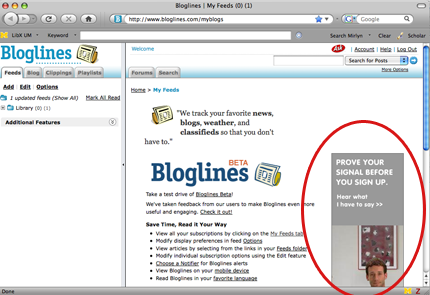Did you know you that it’s easy to add a creative commons license to your RSS and Atom feeds — not just to your blog’s web site? Here are brief instructions for adding your Creative Commons license to RSS and Atom feeds:
RSS 2.0
You need to make two small edits to the RSS 2.0 template your blog software uses.
- Change the line that reads <rss version = "2.0"> to <rss version="2.0" xmlns:creativeCommons="http://backend.userland.com/creativeCommonsRssModule">. This is probably the second line in the RSS file. The addition of the “xmlns…” bit sets up the second item you’ll edit, pointing to the web page that defines an extension to the standard RSS 2.0 field set.
- Then add the URL to the Creative Commons license you’ve selected at the Creative Commons web site. This bit goes anywhere between the <channel> and the </channel> tags. For example, RSS4Lib has an “attribution non-commercial” license, version 3.0. So I’ve added this code to my RSS feed: <creativeCommons:license>http://creativecommons.org/licenses/by-nc/3.0/us/</creativeCommons:license>
Atom
It is even easier to add a Creative Commons license to an Atom feed. There’s just one line to add to the Atom template. For RSS4Lib, this is: <link rel="license" type="application/rdf+xml" href="http://creativecommons.org/licenses/by-nc/3.0/us/rdf" />. Again, this assumes you’ve picked an “attribution non-commercial” license. Whatever the Creative Commons license URL, add “rdf” to the end. And that’s it.
So What?
I suppose that putting the license on the web site alone is enough, from a strict legal standpoint. However, as we all know, RSS feeds have a habit of wandering off almost on their own power. Adding the license to the feeds themselves gives you an extra bit of protection — the consumer of the feed cannot say they were unaware the content was licensed.




